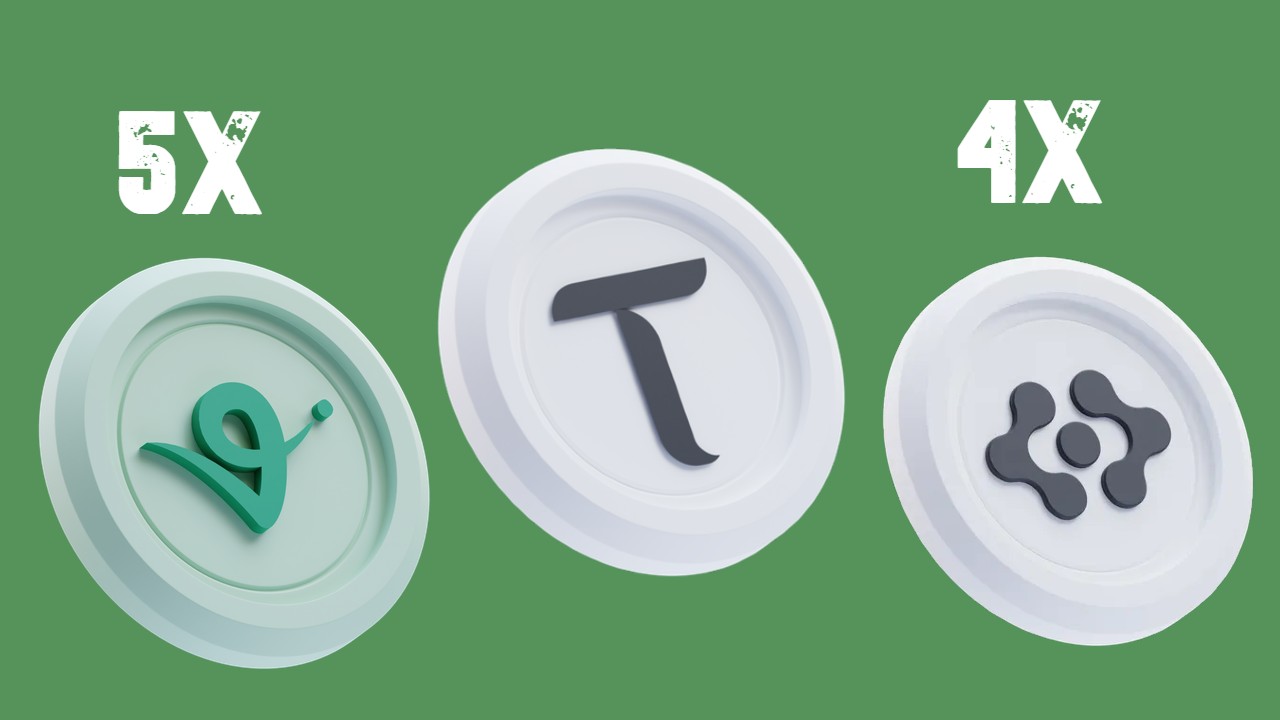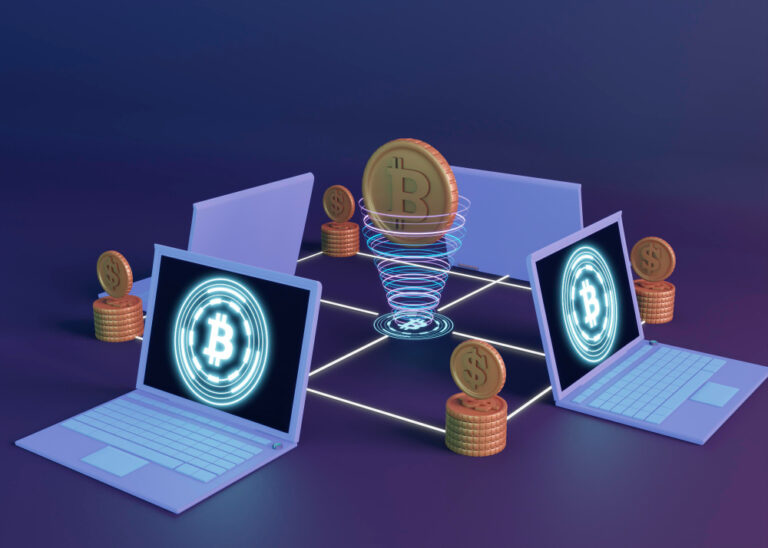Top 5 AI Crypto Projects for High Returns in 2025
Hey there! AI and blockchain are teaming up to create some seriously exciting projects in 2025. I’ve dug into the details and analyzed the top five AI-driven crypto projects you asked about—Bittensor, Render, NEAR Protocol, Virtuals Protocol, and Artificial Superintelligence Alliance (FET). These are all making waves with strong use cases and big potential for high returns, but I’ve ranked them based on their tech, adoption, market performance, and growth prospects.
5 AI Crypto Projects for High Returns
| Project | Token | Market Cap | Key Use Case | Why High Return Potential? |
|---|---|---|---|---|
| Bittensor | TAO | ~$3-4B | Decentralized AI model marketplace | Growing AI adoption, unique consensus, VC backing |
| Render | RNDR | ~$1.6B | Decentralized GPU rendering for AI/visuals | Cost-effective, generative AI demand, partnerships |
| NEAR Protocol | NEAR | ~$3B+ | Scalable blockchain for AI-driven dApps | Developer-friendly, sharding tech, Web3 focus |
| Virtuals Protocol | VIRTUAL | ~$1B+ | AI agents for virtual worlds/metaverse | Rapid growth, metaverse hype, 65% surge in May |
| Artificial Superintelligence Alliance | FET | ~$2-3B | Decentralized AI ecosystem, autonomous agents | Unified platform, ethical AI, enterprise adoption |
1. Bittensor (TAO)

What It Does: A decentralized AI network where users earn TAO tokens by contributing machine learning models. It’s like a marketplace for AI intelligence, using a unique “Proof-of-Intelligence” consensus to reward quality.
Why It’s Strong: With a market cap around $3.6-$4B and growing adoption (thousands of nodes running models), Bittensor’s peer-to-peer AI training is a game-changer. Its 21M token cap and recent 89.99% monthly surge signal strong momentum.
Potential: Backed by Polychain and Grayscale, it’s poised to lead decentralized AI. Expect high returns if adoption scales further.
2. Render (RNDR)

What It Does: A decentralized GPU rendering network, providing computing power for AI models, gaming, and VR. It connects users with idle GPU resources.
Why It’s Strong: Market cap around $1.6-$2.18B, with partnerships like Stability AI. Recent price recovery above $3.83 shows bullish signals. It slashes rendering costs by 50%, making it vital for AI-driven content creation.
Potential: Growing demand for GPU computing could drive RNDR to the $6-$7 range, offering solid returns.
3. NEAR Protocol (NEAR)

What It Does: A layer-1 blockchain using AI for governance and smart contract optimization, supporting scalable dApps with sharding tech.
Why It’s Strong: Market cap of ~$3-$4.68B, with fast, eco-friendly transactions via Nightshade sharding. It’s developer-friendly and powers AI-driven dApps, attracting a wide ecosystem.
Potential: Broad exposure to AI dApps makes it a steady bet, though less explosive than TAO or FET. Returns could be strong with increased adoption.
4. Virtuals Protocol (VIRTUAL)

What It Does: Built on Base (Coinbase’s layer-1), it enables co-owned AI agents for virtual worlds and metaverse applications, with revenue-sharing via Immutable Contribution Vaults.
Why It’s Strong: Market cap of ~$431M-$1.03B, with a 65% surge in May 2025. Its focus on Web3 gaming and AI agents taps into a hot niche. Fully unlocked tokens reduce sell-off risk.
Potential: High-risk, high-reward due to its newer status and metaverse focus. Could hit $3-$4 if the AI agent narrative grows.
5. Artificial Superintelligence Alliance (FET)

What It Does: A merger of Fetch.ai, SingularityNET, and Ocean Protocol, building a unified platform for decentralized AI with autonomous agents for tasks like supply chain optimization.
Why It’s Strong: Market cap of ~$1.79-$3.3B, with a 102.97% monthly price surge. Partnerships with Bosch and Meta boost its credibility. The ASI token (currently FET) powers a robust ecosystem aiming for Artificial General Intelligence (AGI).
Potential: Its comprehensive AI-blockchain stack and enterprise ties make it a top contender for 2025 gains.
Quick Take
Bittensor leads for its innovative AI marketplace and strong market performance. FET’s mega-merger and partnerships make it a close second. Render’s GPU niche is a safe bet for AI computing demand. NEAR offers stability with its broad dApp ecosystem, while Virtuals is a riskier but high-potential play in the metaverse. All have volatility risks, so do your own research and consider market conditions before investing.
What makes Bittensor (TAO) a top pick?
Bittensor is a decentralized AI marketplace rewarding contributors with TAO tokens for sharing machine learning models. Its unique Proof-of-Intelligence consensus and growing ecosystem of AI models make it a leader in decentralized AI development. With a market cap around $3-4B and strong investor backing, it’s poised for growth as AI adoption surges.
Why is Render (RNDR) a strong contender?
Render offers decentralized GPU rendering, slashing costs for AI model training and visual content creation by up to 50%. Its partnerships with firms like Endeavour and Stability, plus a market cap of ~$1.6B, signal bullish momentum. It’s a go-to for generative AI and 3D graphics.
How does NEAR Protocol (NEAR) fit into the AI narrative?
NEAR is a layer-1 blockchain with sharding tech (Nightshade) for fast, low-cost transactions, ideal for AI-driven decentralized apps (dApps). Its $3B+ market cap and focus on scalable AI infrastructure make it a solid bet for developers building Web3 and AI solutions.
What’s the deal with Virtuals Protocol (VIRTUAL)?
Virtuals Protocol enables co-owned AI agents for revenue-generating tasks in virtual worlds. Built on Coinbase’s Base blockchain, it’s gained traction with a $1B+ market cap and a 65% surge in May 2025. It’s a high-growth play for AI-metaverse integration.
Why is Artificial Superintelligence Alliance (FET) a big deal?
FET, part of the ASI Alliance (Fetch.ai, SingularityNET, Ocean Protocol), builds a decentralized AI ecosystem for autonomous agents and ethical AI. With a $2-3B market cap and over 200 AI services, it’s a powerhouse for scalable AI solutions.






